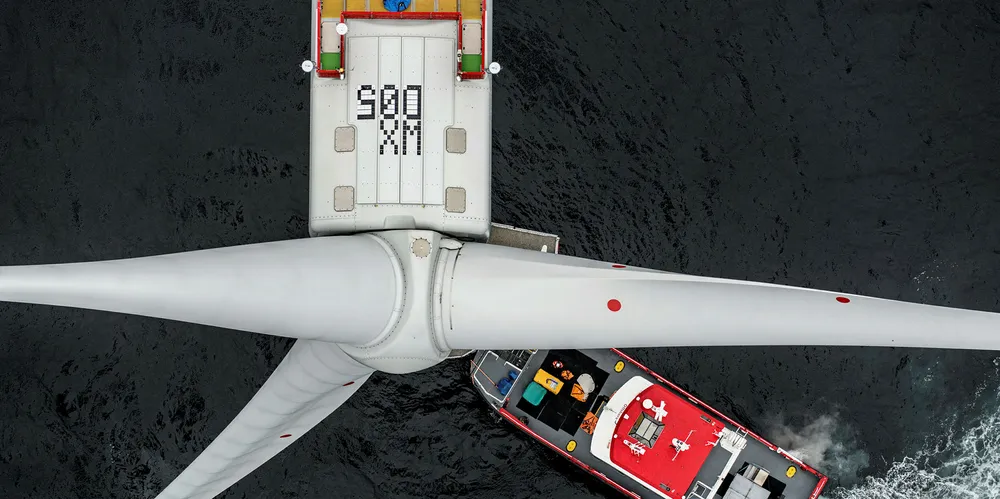The ten biggest projects in European offshore wind power
IN DEPTH | The ten largest offshore wind projects in Europe — all bigger than the existing world number one — are ranked by Bernd Radowitz

Attention in the offshore wind industry may have turned to emerging markets in the US, Asia and elsewhere, but the European sector is very much alive and kicking.
This new batch of enormous projects will also see turbines rapidly increasing in size, with the first 10MW workhorses to be used at Hollandse Kust Zuid 1&2 and 13-15MW machines expected to be used at the 900MW He Dreiht. The former will also become the world’s first offshore wind farm to operate with subsidies (although the Dutch state pays for its grid access).
This £2.5bn ($3.3bn) project in the UK North Sea received a contract for difference (CfD) back in February 2015 at a strike price of £119.89/MWh. Owner Iberdrola and developer ScottishPower Renewables (a unit of Iberdrola) have begun construction about 73km off the east coast of England and will install 102 7MW Siemens Gamesa SWT-7.0-154 turbines, with completion expected next year.
EA1 is the first of four “East Anglia” projects that may eventually form a 3.6MW mega cluster in the North Sea, including the 1.2GW East Anglia 3, the 900MW East Anglia 2, and the 800MW East Anglia One North projects.
The latter two are still pending approval, while EA3 has been consented, which means it can bid in upcoming CfD auctions, but has yet to receive support.
The Blauwind consortium of Shell, Van Oord, Eneco and Mitsubishi won the right to develop this Dutch North Sea zone at auction in late 2016 with what was then a record low winning bid of €54.50 ($61) per MWh, beating the previous holder Orsted ’s €72.70/MWh for Borssele 1&2 (see No. 8). Orsted had hoped to build all four Borssele units as one super-sized project.
Borssele 3&4 is now in the pre-construction phase, with commercial production expected in early 2021. Perhaps unsurprisingly given Mitsubishi’s involvement, Blauwind wants to install 102 9.5MW turbines from offshore-only OEM MHI Vestas, which is 50% owned by Mitsubishi Heavy Industries.
Orsted plans to start offshore construction in the Dutch North Sea next year, erecting 94 Siemens Gamesa 8MW SWT-8.0-154 turbines, and has chosen the port of Buitenhaven in the town of Vlissingen to serve as O&M base for the wind farm, which will become the country’s largest once it enters operations in late 2020.
Like Borssele 3&4 and the Hollandse Kust projects, it forms part of the Netherlands’ plan to add 3.5GW in offshore capacity by 2023. The country has since raised its ambition further, with plans to add a further 7GW in 2024-30.
Hollandse Kust Zuid 1&2 will be the world’s first subsidy-free offshore wind farm when it begins operation in 2023, relying purely on the wholesale electricity price to make its money.
Vattenfall plans to use 76 of Siemens Gamesa’s new SG 10.0-193 DD machines at the North Sea project. It also wants to deploy the same turbines at the Hollandse Kust Zuid 3&4 project (also 760MW), another zero-subsidy area for which tender results are expected in coming months. If Vattenfall were to win at that auction, Hollandse Kust Zuid 1-4 would become a single project and top these rankings with a combined 1.52GW.
The €2.5bn Wikinger/Baltic Eagle wind farm will become the largest in the Baltic Sea upon completion in 2022-23.
The Spanish utility won the rights to build Baltic Eagle at Germany’s second offshore wind tender, with a bid of €64.60/MWh — a remarkably high rate given the zero-subsidy outcomes elsewhere, and was probably due to a lack of competition at the auction.
German utility Innogy won the rights to the £2.3bn North Sea project at a UK CfD auction in 2017 with a strike price of £74.75/MWh.
The Triton Knoll consortium expects to install 90 of MHI Vestas’ V164-9.5MW turbines, and commission the array in 2021. The OEM said it will set up a turbine pre-assembly operation in northeast England to deliver the machines.
Innogy’s renewables assets and projects will become part of a revamped RWE later this year if competition authorities approve of a share- and asset-swap deal with rival utility E.ON.
As the North Sea project is not scheduled for commissioning until 2025, the German utility is betting on rising wholesale electricity prices, as well as a new generation of cost-saving 13-15MW offshore turbines to be on the market by then. EnBW said the zero bid was possible as it also counts on synergy effects from nearby offshore arrays, such as its 610MW Hohe See/Albatros project.
Siemens will deliver three of its innovative cost-slashing offshore transformer modules that attach directly to turbine foundations.
When commissioned in 2020, the 1,218MW project off the Yorkshire coast in England will briefly become the world’s largest offshore wind farm, and will have what now seems like an extraordinarily high CfD strike price of £140/MWh, which was granted by the UK government back in 2014.
Project owner Orsted divested half of Hornsea 1 to infrastructure fund Global Infrastructure Partners late last year. The owners are installing 174 Siemens Gamesa 7MW SWT-7.0-154 machines, the first of which became operational in February.
Hornsea 2 will become the world’s largest offshore wind project when it enters operation in 2022.
The Danish utility won Hornsea 2 at the 2017 UK CfD auction with a strike price of £57.50/MWh — less than half the rate it will receive for Hornsea 1.